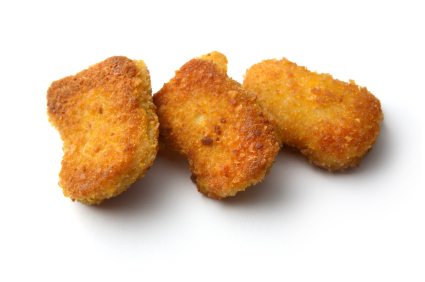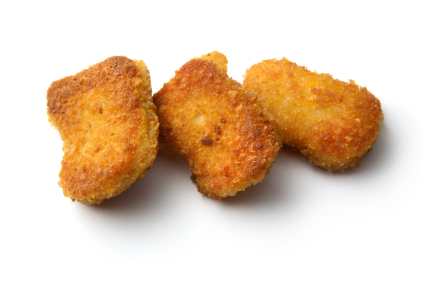When my info-larder gets too packed, it’s time to serve up some choice nuggets from around the Web.
—————-
 Get ’em while they’re hot.
Get ’em while they’re hot.
• Time’s Michael Grunwald on a truly absurd twist in U.S. farm/trade policy: in order to maintain subsidies to U.S. cotton farmers and avoid a trade war with Brazil, the U.S. government has essentially agreed to start subsidizing mega-scale Brazilian cotton farmers.
• Who wins when King Kong and Godzilla go at it? The audience–at least those folks who can avoid getting stomped by the behemoths. And here we have an entertaining cage match between two powerful, entrenched lobbies: King Corn and Industrial Meat. The topic is ethanol. The corn lobby wants the federal government to keep ramping up the goodies for corn-based ethanol. The meat lobby will accept ethanol goodies to a certain point–but roars like an abused CAFO pig when government ethanol goodies push up the price of corn significantly. The meat industry, you see, can only turn a profit when corn is cheap.
My take: a pox on both their camps. We need less corn and less low-quality, resource-intensive meat. The government should eliminate all ethanol goodies and give Corn Belt farmers incentives to transition to other crops: grass-finished beef, vegetables, etc. But of course, no one in Washington listens to me: I don’t represent a powerful, entrenched industry. Here’s what we’re likely to get instead: more ethanol goodies, and more incentive for farmers to increase corn production–soil, climate, Gulf of Mexico be damned. Corn prices will hover in the $3-$5/bushel range, and the meat industry will slash costs in other areas to maintain profitability. In other words, pretty much business as usual.
• But … Corn Belt farmers and their surrounding communities would benefit economically if they at least partially exited the co(r)n game, transitioned some of their land to fruits and vegetables, and sold the produce within the region. So says a new study from the Leopold Center. The study focused on the Upper Midwest: Illinois, Indiana, Iowa, Michigan, Minnesota, and Wisconsin.
In one scenario, the researchers estimated what would happen if farms in those states supplied seasonal fruits and vegetables to the region’s 28 metropolitan areas with at least 250,000 people. (Currently, the vast bulk of produce consumed in the region is trucked in from elsewhere.)
To do so, about 200,000 acres would have to be transitioned from corn and soy (that’s a tiny amount of land in Corn Belt terms–about two-thirds the size of a typical Iowa farm county). “Considering all relevant multipliers, that farm-level production would support 6,694 jobs and $284.61 million in labor income in the six-state area,” the researchers conclude. Meanwhile, keeping that same amount of land in corn and soy supports 1,892 jobs and $42.517 million in labor incomes. In other words, there would be a massive net economic gain from transitioning that much land to fruit and veg.
Seems like many farmers in the Midwest would do well to cancel their National Corn Growers Association memberships and start thinking about what it would take to grow and market veggies.
• Okay, it’s Friday. Some straight foodiness. More than 30 years ago, an obscure young woman published a cookbook on a country that few Americans thought of in culinary terms. That woman was Paula Wolfert, and that book was Couscous and Other Good Food from Morocco. What followed was arguably the greatest career in cookbook writing of her generation: something like six classic texts. My stomach literally grumbles when I think of the creations I’ve made guided by Wolfert’s books. Here she is, in a Food and Wine profile, going back to Morocco. Note well: The piece includes recipes. It’s a little early in the season for eggplant and tomatoes, but I can’t wait to try this one.



